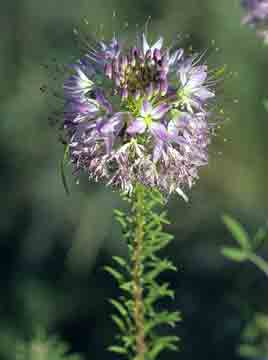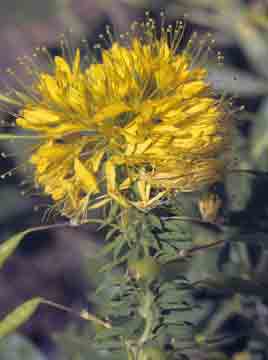 |
Rocky Mountain beeplant, Cleome
serrulata Pursh (left). Despite its common
name, the Rocky Mountain beeplant is not restricted to the Rocky Mountains.
Originally found only in the West and Midwest, it now grows in the Northeast
as an introduced plant. In Idaho, it is found as high as montane foothills.
Beeplants are easily identified by their tall stems surrounded by short,
narrow, three-lobed leaves. Thanks to their clustered, attractive, four-petaled,
long-anthered flowers they are often grown as ornamentals. Bees are attracted
to their flowers, further adding to their appeal. Lewis and Clark collected
the Rocky Mountain beeplant in South Dakota in August of 1804; the plant
was then new to science.
Yellow beeplant, Cleome lutea Hook.
(right). A closely related plant, the yellow beeplant has remained west
of the Mississippi, growing most commonly near standing water. We are including
it here, for it is said to occur in Idaho’s mountains as a montane plant,
although—unlike the Rocky Mountain beeplant—we have not seen it
growing that high. Cleomes were used by Native Americans for their edible
seeds and the young plants were used as potherbs. Thorough boiling is necessary
before the plants can be eaten, for the plants have a most unpleasant
odor. |
 |

